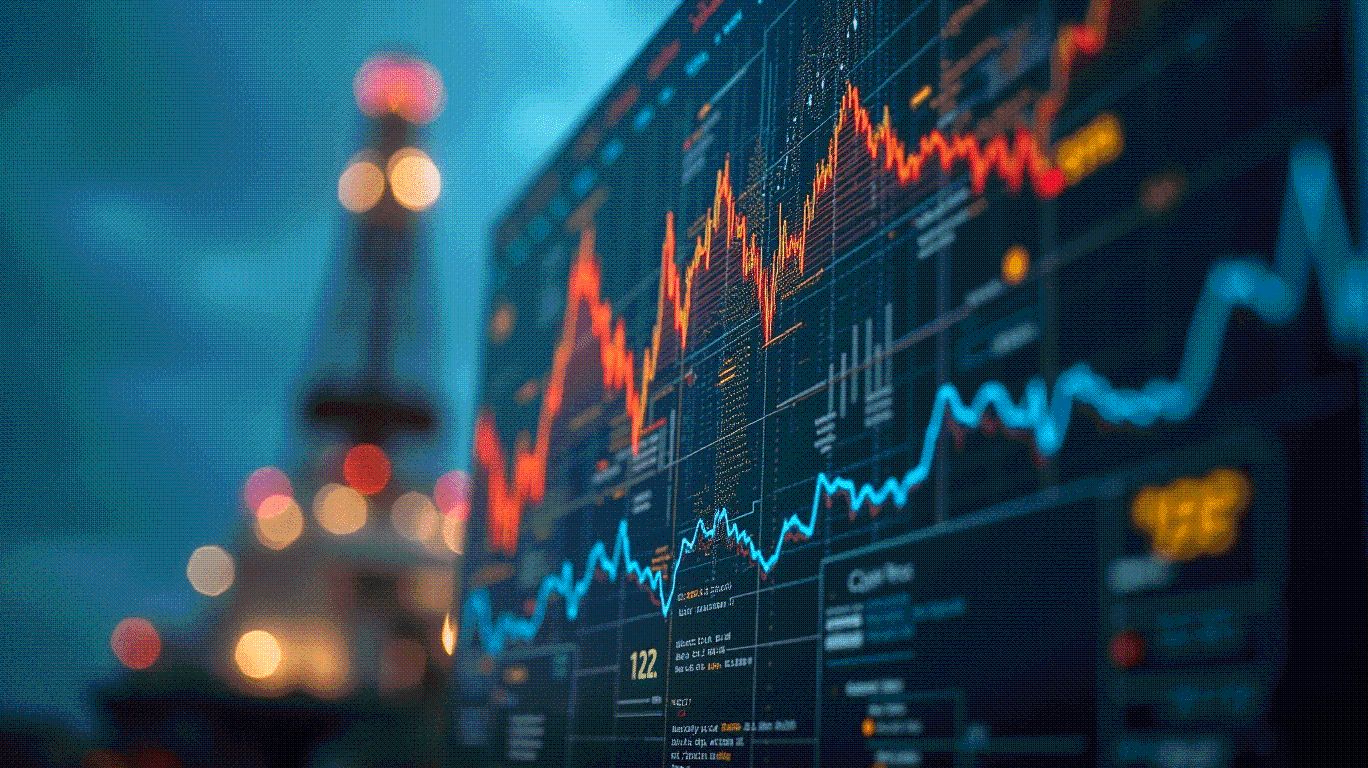Investors Hold Breath as Cardano Waits on Macro Catalysts
- Cardano's ADA token is consolidating in a symmetrical triangle pattern between $0.85 and $0.98, with traders anticipating a breakout. - Co-founder Charles Hoskinson highlighted potential catalysts like a September Fed rate cut and the Digital Asset Market Clarity Act, while announcing a $23M investment in native tokens. - Increased institutional/retail participation and a 2% 24-hour gain suggest resilience despite SEC delays to a Cardano ETF, though ADA remains 77% below its 2021 peak. - Analysts expect
Cardano's ADA token has entered a period of consolidation, forming a distinct triangle pattern that traders are closely monitoring for potential breakout signals. Recent price movements show ADA fluctuating between support and resistance levels, reflecting the market's cautious approach amid regulatory and macroeconomic developments. Over the past 24 hours, ADA traded within a $0.856–$0.963 range, stabilizing around $0.87 after a volatile session marked by a 10% swing in value [1]. This consolidation phase is being interpreted by analysts as a precursor to a decisive price movement, either breaking above key resistance or retreating toward critical support levels [4].
Cardano co-founder Charles Hoskinson has played a pivotal role in shaping investor sentiment during this period of uncertainty. In a recent AMA session, he emphasized the potential of upcoming macroeconomic events to drive the next wave of crypto market momentum. Specifically, he highlighted the likelihood of a September Federal Reserve interest rate cut and the anticipated passage of the Digital Asset Market Clarity Act as key catalysts [1]. Hoskinson also announced a $23 million investment into Cardano Native Tokens to strengthen the ecosystem, reinforcing the project’s long-term vision and its commitment to competing with other blockchain platforms [2].
The price behavior of ADA is also being influenced by broader market dynamics. The token has seen increased institutional and retail participation, as evidenced by heightened trading volumes around the $0.87 level, where buyers have stepped in to support the price [1]. While ADA is still up 125% from a year ago, it remains significantly below its all-time high of $2.90 in August 2021 [1]. Analysts note that the current consolidation phase is in line with a typical market cycle, where investors remain range-bound while waiting for regulatory clarity and macroeconomic signals.
In terms of technical analysis, ADA is forming a symmetrical triangle pattern between $0.85 and $0.98 [4]. This pattern is often seen as a sign of indecision in the market, with traders waiting for a clear direction before making larger moves. If the price breaks above the $0.98 resistance, it could signal a potential push toward $1.10–$1.15. Conversely, a breakdown below $0.85 could lead to a pullback toward $0.80. Given the current positioning of ADA, the triangle pattern suggests a breakout is imminent, although the direction remains uncertain.
The broader crypto market environment has also contributed to ADA’s price behavior. The SEC’s delay of Grayscale’s proposed spot Cardano ETF to late October 2025 has created some uncertainty, but the token has shown resilience despite this [3]. Traders appear more focused on the potential for a September Fed rate cut and the ongoing shift in capital from Bitcoin into altcoins during consolidation phases. This trend has historically supported altcoin performance, and ADA is no exception, with its 2% gain over the past 24 hours reflecting broader market optimism [3].
As Cardano continues to consolidate and await key macroeconomic catalysts, the focus remains on regulatory developments and the broader crypto market environment. With strategic investments, growing institutional adoption, and a strong foundation in smart contract capabilities, Cardano is positioned to potentially benefit from the next phase of market conditions. However, until a clear breakout occurs, investors are likely to remain cautious, waiting for more definitive signals before committing to larger positions [1].
Source:

Disclaimer: The content of this article solely reflects the author's opinion and does not represent the platform in any capacity. This article is not intended to serve as a reference for making investment decisions.
You may also like
Dogecoin (DOGE) vs. Mutuum Finance (MUTM): Evaluating Short-Term Volatility vs. Long-Term DeFi Utility in September 2025
- In 2025, Dogecoin (DOGE) relies on meme-driven retail hype while Mutuum Finance (MUTM) builds DeFi infrastructure with institutional-grade security. - DOGE's $0.209–$0.242 range reflects high volatility and speculative NVT/MVRV ratios, contrasting MUTM's presale traction and projected 8,571% ROI by 2026. - MUTM's dual-lending framework, USD-pegged stablecoin, and CertiK audit create structured growth, outperforming DOGE's limited utility and market whims. - Institutional validation through $14.83M presal

The Fragile Edge of DeFi: Assessing the Long-Term Viability of Decentralized Exchanges Amid Whale-Driven Volatility
- A $47.5M XPL token manipulation on Hyperliquid exposed DeFi's systemic vulnerabilities, including thin liquidity and lack of safeguards. - Whale addresses exploited isolated margin systems to trigger $7M+ retail losses through rapid price surges and cascading liquidations. - The incident highlights DeFi's paradox: transparency enables both market visibility and predatory strategies by concentrated actors. - Investors are urged to avoid speculative pre-launch tokens while platforms debate regulatory frame

Navigating the Fed's September Rate Cut: Timing, Impact, and the Shadow of Political Pressures
- Fed's 2025 September meeting faces pressure to cut rates amid 2.1% inflation vs. 2% target and 1.4% GDP growth. - Political tensions rise as Trump administration criticizes Fed independence through tariff policies and personnel disputes. - Market anticipates 25bp rate cut (82% probability) but fears politicization could undermine central bank credibility. - Investors advised to prioritize quality equities and short-term bonds amid inflation risks from persistent tariffs.

AI Is Democratizing Cybercrime—Making Hackers Obsolete
- Anthropic's report reveals cybercriminals weaponize AI to automate attacks, lowering technical barriers for cybercrime. - AI tools enable data extortion, fake job scams, and ransomware-as-a-service, targeting healthcare, government, and tech sectors. - North Korean hackers use AI to create fake identities for remote jobs, bypassing sanctions and skill requirements. - AI-generated ransom notes analyze financial data to set extortion amounts, marking a new phase in cybercrime tactics. - Anthropic bans abus
